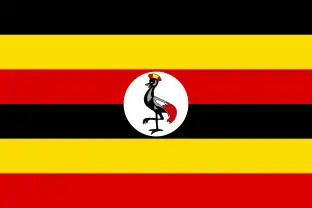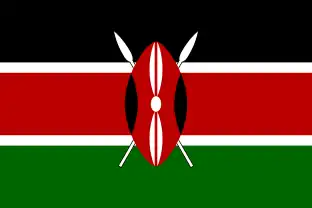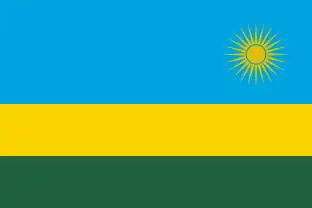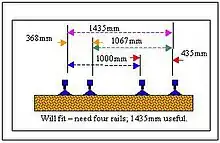New lines in East Africa
2010
2008
2007
According to Railway Gazette International of November 2007, East Africa (TZ, KE, ET and UG) are proposing lines aplenty.[1]
 Kasese, Uganda to
Kasese, Uganda to  Kisangani, DRCongo
Kisangani, DRCongo Gulu to
Gulu to  Nimule and
Nimule and  Juba in Sudan
Juba in Sudan Pakwach, Uganda to
Pakwach, Uganda to  Juba and
Juba and  Wau in Sudan
Wau in Sudan Garissa, Kenya to
Garissa, Kenya to  Addis Abeba in Ethiopia
Addis Abeba in Ethiopia Lamu to
Lamu to  Garissa and
Garissa and  Juba again
Juba again Masaka, Uganda to
Masaka, Uganda to  Biharamulo, Tanzania
Biharamulo, Tanzania
Another seven (eight?) routes include:
 Mbamba Bay on Lake Nyasa to
Mbamba Bay on Lake Nyasa to  Ligunga via
Ligunga via  Mchuchuma coal mines.
Mchuchuma coal mines. Ligunga to
Ligunga to  Mlimba
Mlimba Dar-es-Salaam to port of
Dar-es-Salaam to port of  Mtwara
Mtwara Tunduma on TZ-ZM border via
Tunduma on TZ-ZM border via  Sumbawanga and
Sumbawanga and  Mpanda to
Mpanda to  Kigoma
Kigoma Uvinza to
Uvinza to  Bujumbura, in Burundi
Bujumbura, in Burundi Bagamoyo to
Bagamoyo to  Kidomole
Kidomole Isaka Dry Port to
Isaka Dry Port to  Kigali in Rwanda
Kigali in Rwanda
Gauge unification
Triple gauge for the three main gauges in Africa are a practible solution for mixed gauge tracks.

1000 mm and 1067 mm gauges can be combined as a 4 rail dual gauge with bonus 1435 mm gauge

Triple gauge supports the three main gauges in Africa:
Red: 1,000 mm (3 ft 3+3⁄8 in),
Green: 1,067 mm (3 ft 6 in) and
Blue: 1,435 mm (4 ft 8+1⁄2 in).
The wide separation or the outer pairs of rails (435 mm and 368 mm) provides space for railclips and suits turnout construction.
Red: 1,000 mm (3 ft 3+3⁄8 in),
Green: 1,067 mm (3 ft 6 in) and
Blue: 1,435 mm (4 ft 8+1⁄2 in).
The wide separation or the outer pairs of rails (435 mm and 368 mm) provides space for railclips and suits turnout construction.
Narrow 1,067 mm (3 ft 6 in) gauge and Metre 1,000 mm (3 ft 3+3⁄8 in) gauge are too similar (67mm) to allow third rail dual gauge. Four rails must be used, which creates a third gauge, which may as well be 1,435 mm (4 ft 8+1⁄2 in) gauge.
See also
References
- ↑ Railway Gazette International of November 2007 p688
This article is issued from Wikipedia. The text is licensed under Creative Commons - Attribution - Sharealike. Additional terms may apply for the media files.